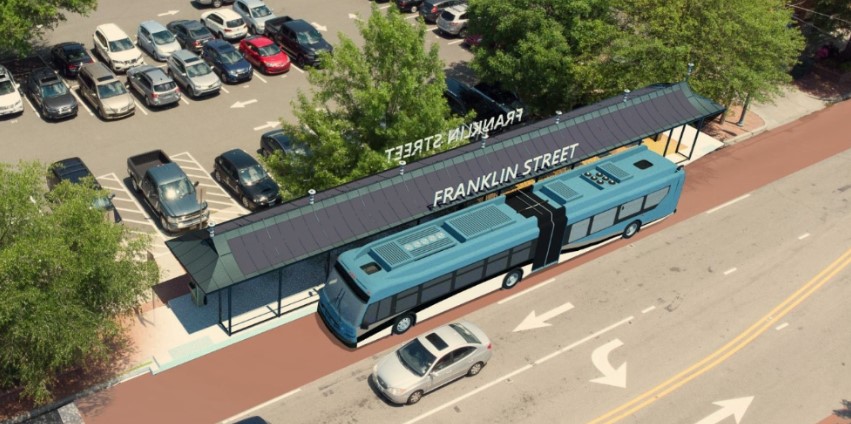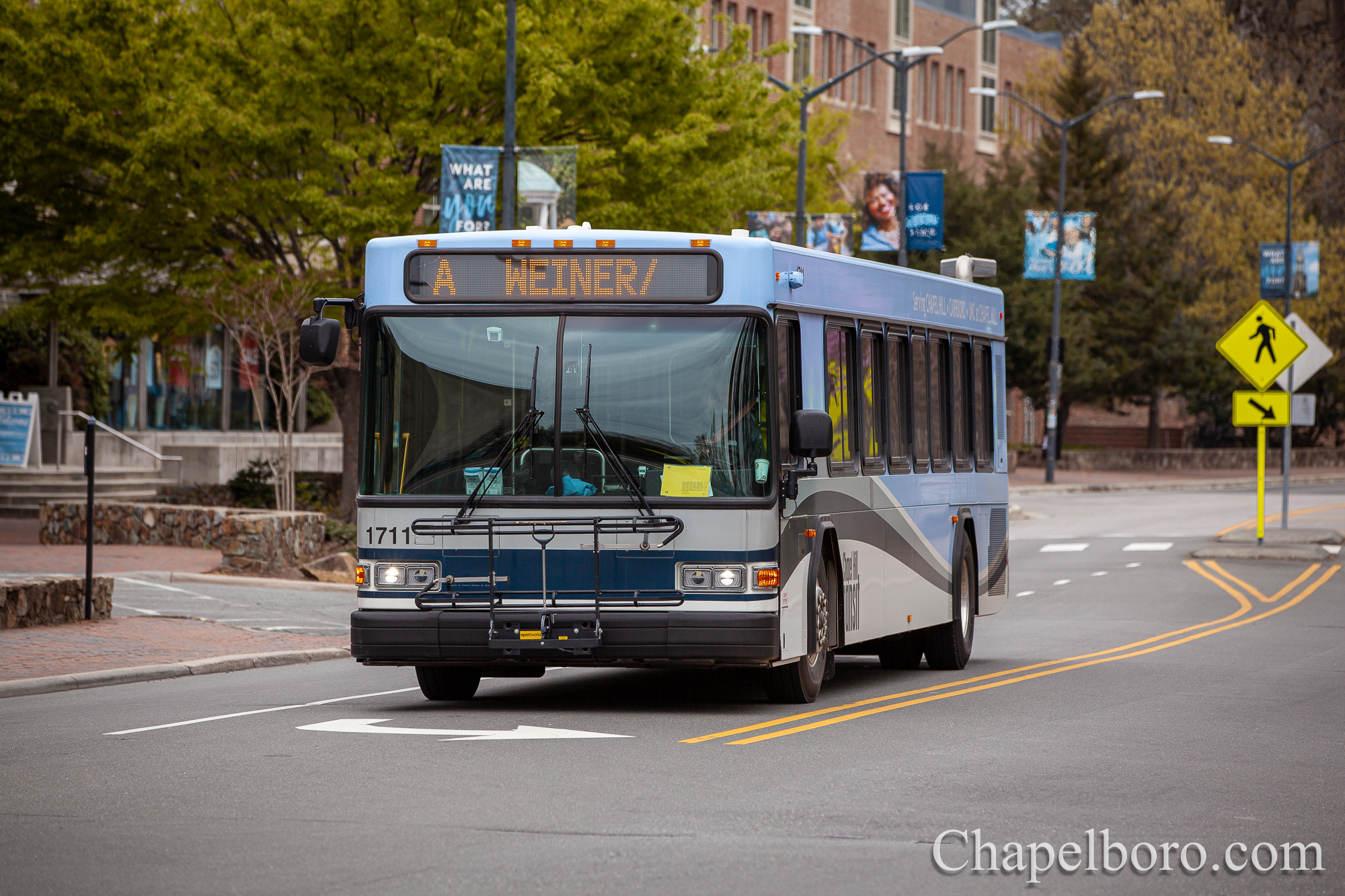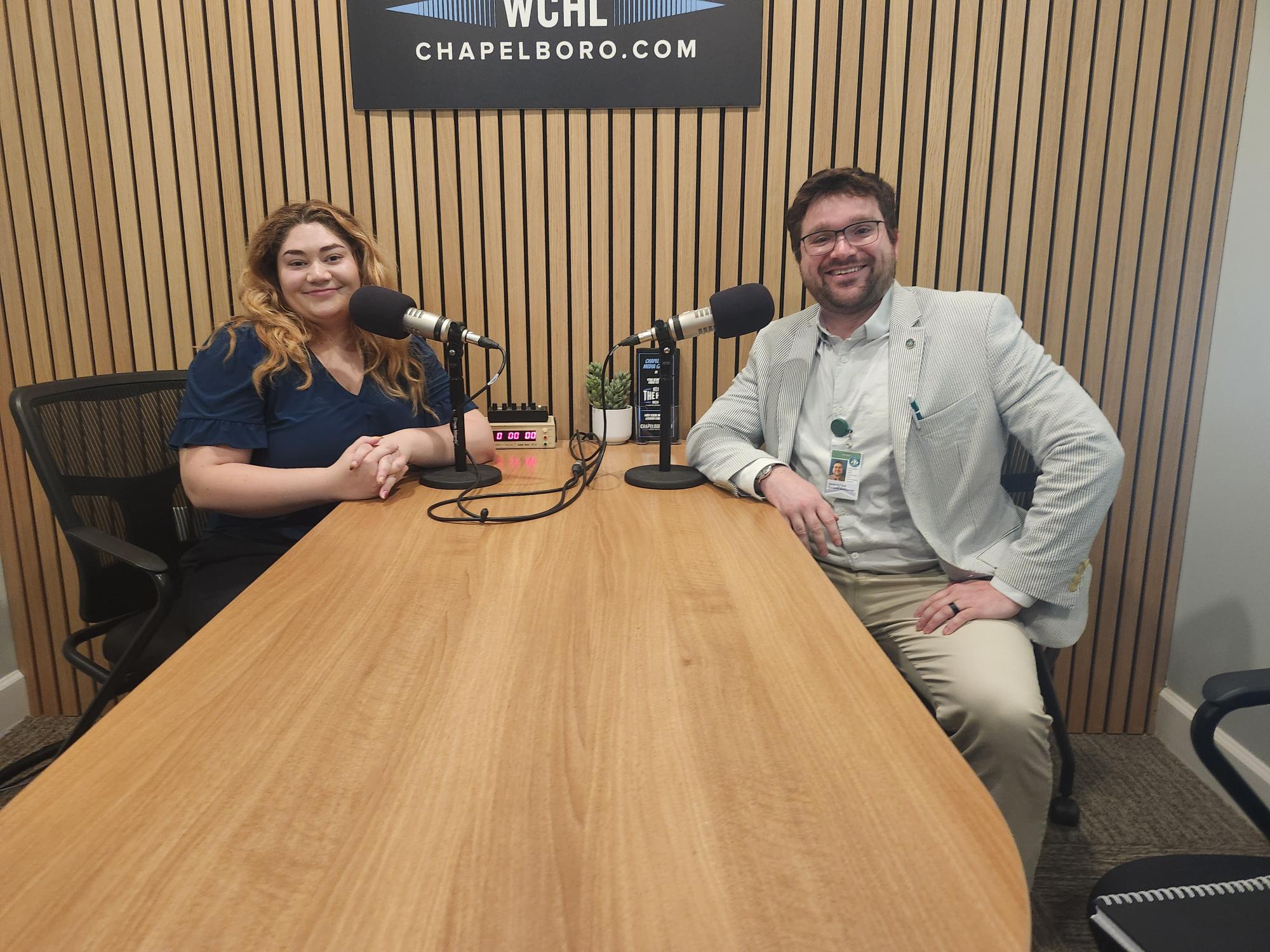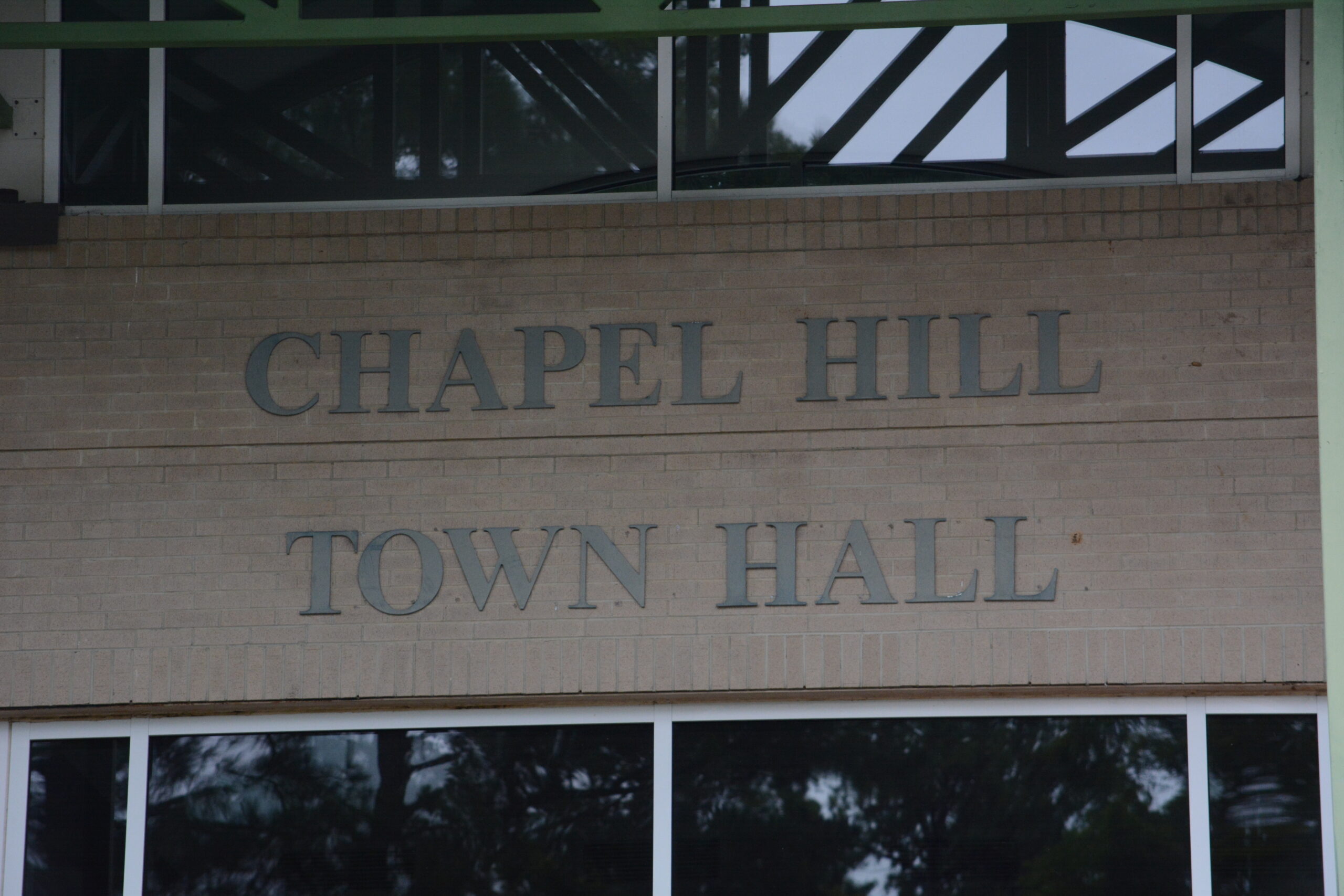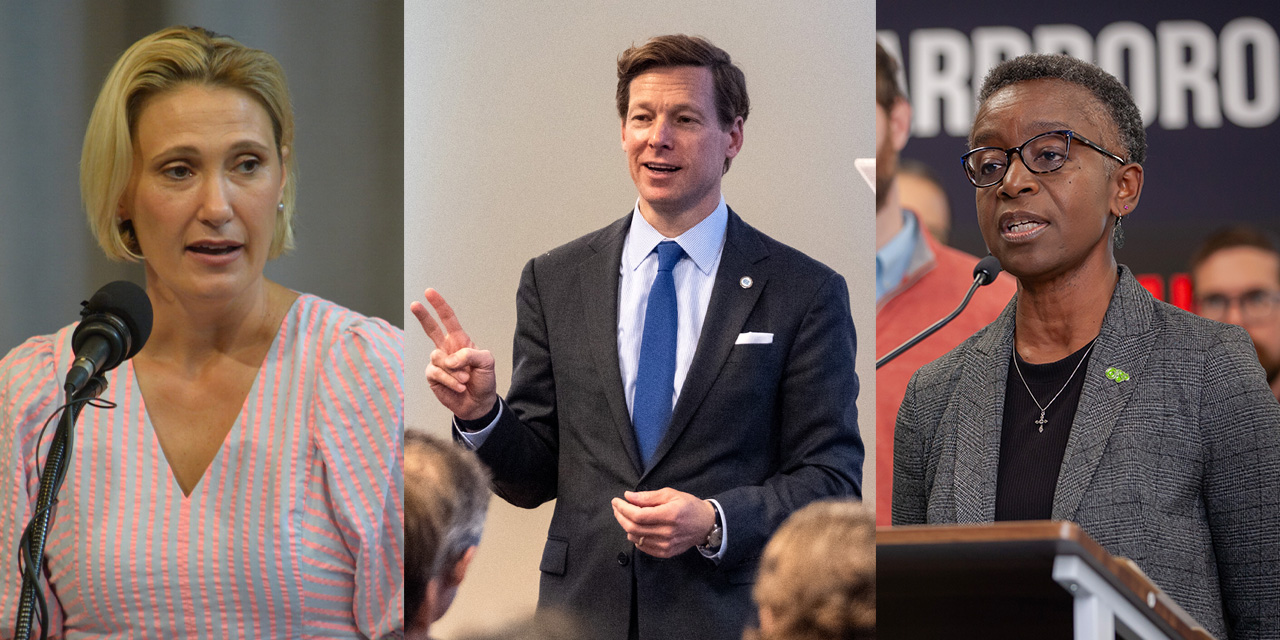It is not often the Town of Chapel Hill gets included in a U.S. president’s recommended budget for the federal government – but that was the case on Monday when President Joe Biden revealed his Fiscal Year 2025 Budget Request.
Among the recommended allocations are more than $138 million dedicated to Chapel Hill’s ongoing North South Bus Rapid Transit project, which would bring a streamlined bus line to one of the area’s busiest corridors. The local bus rapid transit (BRT) system is among 14 major transportation projects the Biden administration wishes to fund with nearly $4 billion in his budget proposal.
Transit Director Brian Litchfield said his team heard the news on Monday when the budget was revealed. He and the three staffers who lead Chapel Hill Transit’s efforts on the project – Matt Cecil, Carolina Dwyer, and Nick Pittman – sat in the hallway of the department offices to celebrate in the spot where they’ve held dozens of meetings about bus rapid transit in the past.
“This is a huge step,” Litchfield told Chapelboro. “This is a project some of us have been working on for [more than] a decade. To see this go from something that was kind of a line on the map [and] that might happen, to something with a really strong change of happening is amazing. It’s great for Chapel Hill Transit, our community, [and] our funding partners.”
Chapel Hill’s North South Bus Rapid Transit project is currently in its 60 percent design phase. When completed, it will be a bus line that runs the 8.2-mile corridor from the Eubanks Road Park and Ride Lot to the Southern Village Park and Ride Lot – almost the furthest north and south parts of the town’s limits. The BRT will have dedicated buses that arrive at a higher frequency than other stops, dedicated travel lanes along the corridor, and dedicated stations for riders to use.
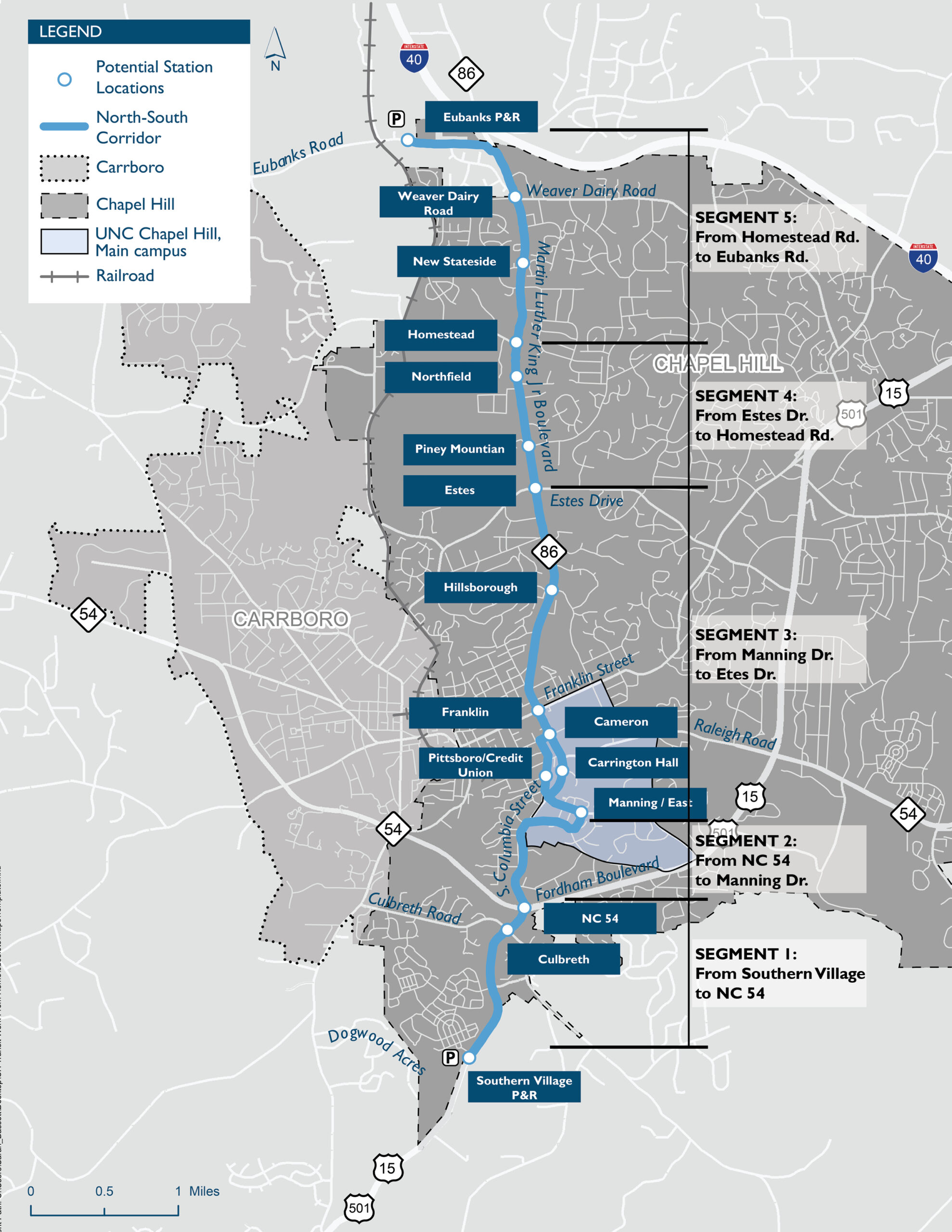
A map of the future Chapel Hill North South Bus Rapid Transit line, featuring potential stops and important areas it will serve. (Photo via the Town of Chapel Hill.)
While proud and determined, the team working on Chapel Hill’s BRT acknowledged there was an uphill battle to complete the funding necessary for the project. After receiving an initial $8 million from the U.S. government years ago and having commitments from the state, county and town, the biggest chunk of capital needs remained – and inflation pushed those cost estimates higher in recent years. Litchfield also said there was no way to know whether the federal funds would cover all the remaining expenses, which make up 80 percent of the project’s cost.
But the 1,300-page application submitted by Chapel Hill Transit paid off: the $138.3 million the Biden-Harris administration recommends would presently take care of all the most expensive pieces.
“That covers construction, buses, the stations, the pedestrian improvements, the signal improvements… [it covers] all of those things,” said the transit director. “The only thing we can’t use that money for is our operational costs.”
Litchfield often describes the future BRT line as “a transit project with transit goals,” but with a much wider impact outside of transit. Chapel Hill Mayor Jess Anderson agrees, and told 97.9 The Hill the project helps advance several of the town’s long-term goals from transit to climate action to housing growth.
“It’s about connecting people, getting them out of their cars,” said Anderson. “It means that as we grow and densify people have other options, so they’re not stuck in traffic.”
As the town government is examining its land use ordinance and implementing strategies outlined in its Complete Communities framework, Anderson said having the North South Bus Rapid Transit would be “a huge deal” toward achieving its goals. The corridor is an area where elected officials are examining for future growth and already sees heavy traffic each day. The project’s addition of other pedestrian and alternate transportation infrastructure will also help, said the mayor.
“It’s not just improving bus service,” Anderson described. “It’ll include new sidewalks and multi-use paths, and that will allow more people to walk and bike to more places – and to the bus. So, it kind of gets us a lot.”
“But,” she added, “having denser housing along transit corridors is the way you get more affordability for people, more options for people without necessarily having to have more cars. So, that [element] is really important to our growth plans for Chapel Hill.”
Litchfield acknowledges that being included in the Biden administration’s proposed budget is still an early step. With an election coming up in November and a divided Congress right now, there are plenty of reasons to believe the president’s proposal is not simply going to be rubber-stamp approved. While the Chapel Hill Transit Director said politics complicate matters, being a transportation project and making it into the first draft of a budget is still an encouraging sign.
“The good news is, from the data we’ve looked at,” said Litchfield, “typically around 85 to 90 percent of the transit projects included in a president’s budget are funded and built at some point in time. We’re hopeful that we get an appropriation in next year’s transportation bill – but, again, there’s no guarantee.”
More about Chapel Hill’s North South Bus Rapid Transit project can be found on the town’s dedicated website for the effort.
Photo via the Town of Chapel Hill.
Chapelboro.com does not charge subscription fees, and you can directly support our efforts in local journalism here. Want more of what you see on Chapelboro? Let us bring free local news and community information to you by signing up for our newsletter.

